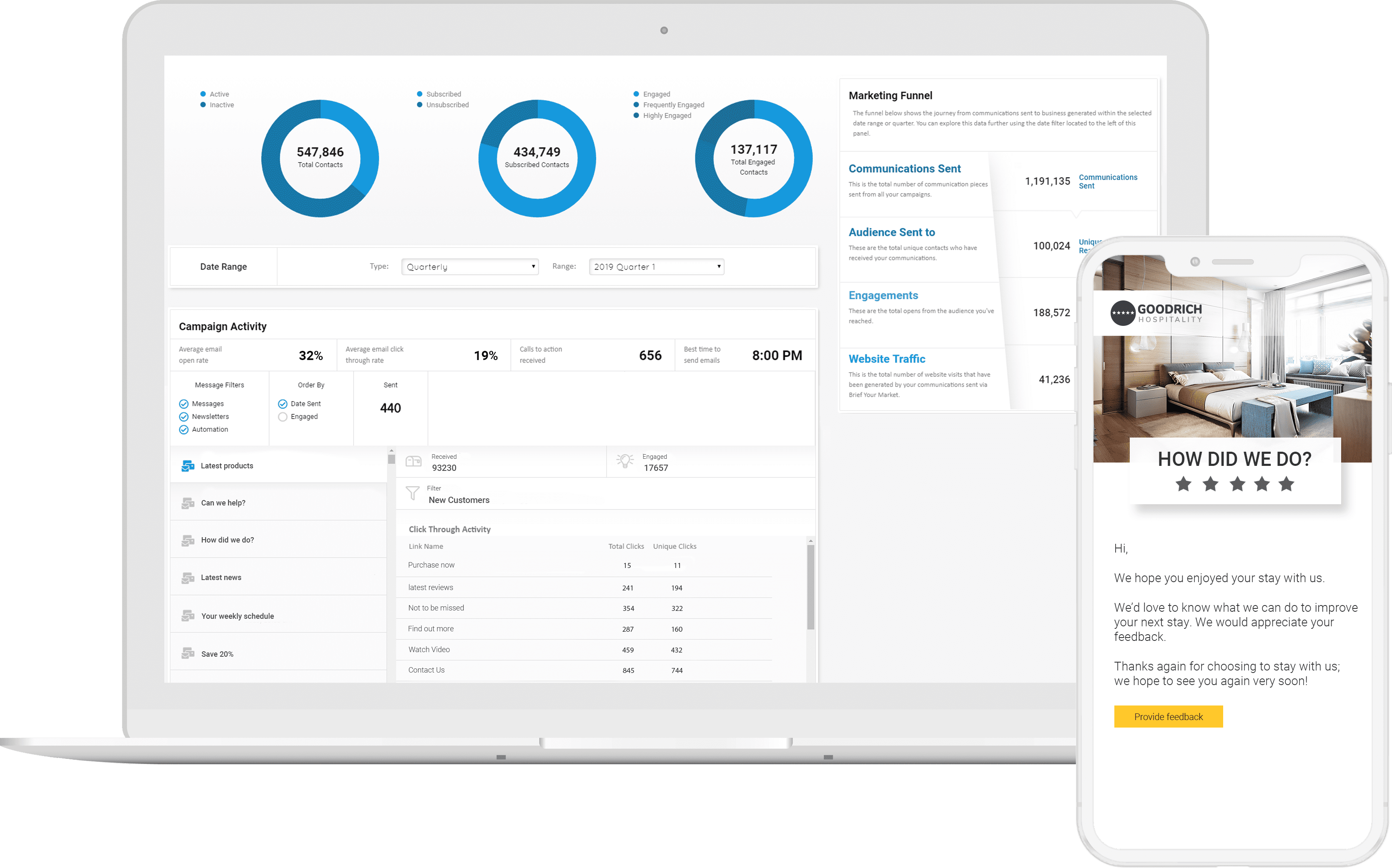Do you know what drives your customers? Whilst 80% of businesses believe that they do, only 8% of their customers would agree.
By understanding your target market, you can enhance your customer communications, increase business efficiency and form strong guest relationships that can withstand competitive offers from your rivals.
So, what does your ideal guest look like, and what do you need to do to reach them?
Here are a few examples of the customer types within the industry, from corporate bookers to groups and families.
Families
By life stage, these consumers take the most holidays, with young families (i.e. children under 5) taking an average 2.4 domestic breaks and older families (children over 5) taking 2.7 per year.
As a consumer group, families can be difficult to please, mostly due to the fact that their needs represent those of a multi-generational group.
In 2017, 40% of bookings were for immediate family members only with a further 21% including extended members as well.
This means that you’ll need to balance priorities ranging from price and activities, to child-friendly amenities and services.
Children are a huge factor when it comes to where and how their families travel, with around 77% stating that their children “highly influenced” the planning of activities, and 54% saying that they helped choose the hotel.
The business or solo traveller
In the UK alone, business travel accounts for £39 billion, which is set to rise over the next ten years at 3.7% per annum.
Furthermore, what starts as a simple business trip for many consumers actually leads to a hybrid form of travel now known as “bleisure”, as 49% of corporate guests extended their stay this year to enjoy themselves.
This new trend is particularly prominent amongst millennials, considering that 80% of working professionals in this age range have planned personal time around their work plans.
Although these guests have begun showing an interest in shared economy platforms, with 25% having made an Airbnb booking and a further 44% considering it for the future, if you provide the right loyalty scheme, you’ll soon build a lasting rapport.
Whilst those aged 65 and over are fast-becoming the most common solo traveller, with 18% travelling alone within the past 12 months, and 81% of those suggesting that they wanted the opportunity to do what they want.
Whether travelling for work or pleasure, the solo traveller will require space, access to Wi-Fi, value for money and convenience.
Millennials
In contrast to other generations, millennials often travel with their friends or partners, and rely heavily on technology to plan and book their vacation.
Just to show you how techy-savvy they are, we’ve provided the following statistics.
- 75% upload a photo or status to social media every day of their holiday.
- 80% read between six to twelve reviews before booking.
- 49% look at menus online before deciding on a restaurant.
- 51% use their mobiles for hotel searches.
Despite loyalty schemes working for other customer types, they are often unsuccessful with millennials, as they’re more interested in trying new places.
However, given the free publicity that they can grant your hotel or restaurant from sharing posts and pictures online, millennials can actually generate you more organic business and referrals.
The hasty booker
As a business owner, last-minute bookers are an incredibly valuable asset.
The hasty booker is the least price-sensitive customer you’ll meet. Whilst it might be fair to assume they’re waiting for the right deal, it turns out to be quite the opposite, as these guests are more likely to have between £500 to £750 in disposable income per month and are aged between 35-44.
With a spontaneous outlook on life, these consumers don’t mind taking risks with their money (34% vs. 21%) and are more likely to “impulse buy” (51% vs. 43%).
The hasty booker is the perfect customer to attract during lulls in business but they can also be notoriously fickle.
One of the most common causes of booking drop-outs is a lack of research and planning, which sums up the hasty booker’s approach pretty well, given that 59% of these guests prefer not to plan ahead.
Stags and hens
Love them or loathe them, rowdy groups of hens and stags bring with them a lot of business.
In the last five years, stag and hen group spending has increased by 50% and 28% (respectively), leading to a combined worth of £300 million each year from the UK’s hen and stag industry.
With one in twenty of these events now lasting for a whole week, and the average cost sitting at £464 per person – including accommodation, drinks, food, and activities – it’s clearly a lucrative customer group for hoteliers and restaurateurs to target.
However, reports seem to suggest that these pre-wedding festivities can garner mixed reviews, even from their attendees. Although some say they’d be happy forking out more money to try new experiences, more than half of Brits (60%) dread attending or end up turning down invitations.
What’s more, some hotels are now showing reluctance to host these events for fear of attracting anti-social behaviour. Yet with 31% preferring a relaxed hen or stag, there are certainly other ways that your business can cater for these crowds.
Create meaningful and profitable relationships with your guests.
Find out how BriefYourMarket.com can help you to build the ultimate customer journey – book your consultation.


